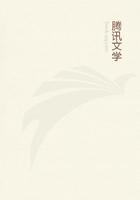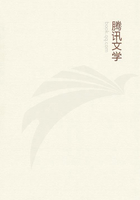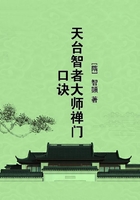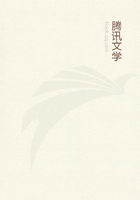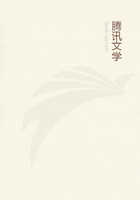It is a question whether this variety does not merely represent an older and better developed plant than those upon which the species is based.Mr. Harry I. Budd, who has made extensive collections of Texan and Mexican Cacti for the market, reports that it is impossible to separate sharply the variety from the species in the field, and regards the difference merely as one of age.Unfortunately, only living material of the species could be examined, but its characters seem well sustained even in the most vigorous plants, some of which reach the size of the variety.Through this variety the species is brought very near the following:
14.Cactus bispinus.Mamillaria microtheleMuhlenpf. Allg. Gart.
Zeit. p. 11 (1848), not Lem. (1838).
Differs from the last form (var. greggii) chiefly in its cespitose habit, much larger tubercles, and two unusually stout and short central spines (fide Engelmann, who examined specimens in Coll. Salm-Dyck).
Credited to Mexico in general, but said by Budd to occur within the southern border of Pecos County, Tex.
Central spines present and one or more hooked. Mostly globose and simple plants (occasionally somewhatcylindrical).
15.Cactus wrightii (Engelm.) Kuntze. Rev. Gen. Pl. 261 (1891).
Mamillaria wrightiiEngelm. Syn. Cact. 262 (1856).
Globose or depressed globose (top-shaped below), 3 to 7.5 cm. in diameter, simple: tubercles 10 to 12 mm. long, with naked axils: radial spines 8 to 12, white (the upper dusky-tipped), pubescent, 8 to 12 mm. long central spines mostly 2 (usually side by side and divergent), rarely 1 or 3, scarcely longer, hooked and reddish-black: flowers 2.5 cm. long, bright purple: fruit about 2.5 cm. long, somewhat subglobose, purple: seeds 1.4 mm long, black and pitted.(Ill. Cact. Mex. Bound. t.8. figs. 1- 8)Type, Wright of 1851 in Herb. Mo. Bot. Gard.
High plains and rocky places, from the Upper Pecos, east of Santa Fe,N. Mex., southward through extreme southwestern Texas (between thePecos and El Paso), and into Chihuahua (near Lake Santa Maria).
Specimens examined: New Mexico (Wright of 1851; Rusby of 1880): also growing in Mo. Bot. Gard. 1893.
Dr. Engelmann calls attention to the fact that this species is closely allied to the Mexican C. zephranthoides (Scheidw.), but in the absence of material representing the latter species no comparison can be made.In descriptions of the Mexican species the differently colored flowers and the much longer spines suggest differences that an examination of fruit and seed characters may still further emphasize.
16.Cactus goodrichii (Scheer) Kuntze. Rev. Gen. Pl. 260 (1891).
Mamillaria goodrichiiScheer in Salm Cact. Hort. Dyck. 91 (1850).
Globose or ovate, 5 to 7.5 cm. high, subsimple: tubercles ovate, short (3 to 5 mm.), somewhat corky and persistent, with dense wool in the young axils containing 5 to 8 stiff bristles: radial spines 11 to 15 (the uppermost one sometimes wanting), white and rigid, 5 to 7 mm. long, entangled with adjoining clusters; central spines 3 or 4 (often solitary in young plants), brownish-black,the upper ones divergent and straight (rarely showing a tendency to hook), the lower longer (9 to 10 mm.), stouter and hooked (usually upwards): flowers 12 to 18 mm, long, the petals yellowish-white with red midribs: fruit clavate and scarlet. (Ill. Cact. Mex. Bound. t. 8. figs. 9-14)Type: Scheer says that the plant was brought from the Island of "Corros" (Cedros?) by Dr. Goodrich, and "unfortunately perished in the gardens," which generally means that there is not a fragment of the type in existence.
In dry ravines, from San Diego County, California, southward throughout Lower California and the neighboring islands (including Guadalupe Island)."Llavina."Specimens examined: California (Parry of 1850, 1875; Agassiz of 1872; Parish 450 of 1882 at Vallecito): Lower California (Gabb 18 of 1867; Brandegee of 1889 on Magdalena Island, and 240 of 1890 from San Jose del Cabo): also specimens cultivated in Gard. Salm-Dyck.
By a misprint in Cact. Mex. Bound, the specific name appeared as "Goodridgii," and this error appears in almost every subsequent mention of the species, even in Watson's Bibliographical Index, although in Syn.
Cact. and other references by Dr. Engelmann the correct form appears.
17.Cactus pondii (Greene).
Mamillaria pondiiGreene, Pittonia, i, 268 (1889).
Oval or cylindrical, from low to 30 cm. high, simple or sparingly branched: radial spines 20 to 30, white and slender; centrals 4 or 5, the longest over 25 mm, long, rigid and strongly hooked, dark brown above the middle: flowers nearly 5 cm. long, bright, scarlet: fruit unknown.Type, Pond specimens in Herb. Greene.
Cedros Island, off the west coast of Lower California.Fl. February.
Unfortunately, the type specimen has been mislaid, so that no examination of it could be made.Evidently related to C. goodrichii, but differing in its much more robust habit, more numerous radials, much longer spines, and larger scarlet flowers.
18.Cactus barbatus (Engelm.) Kuntze, Rev. Gen. Pl. 261 (1891).
Mamillaria barbataEngelm. Wisliz. Rep. 22 (1848).
Depressed-globose, about 4 cm. in diameter, simple: tubercles 8 mm. long, with naked axils: radial spines very numerous (50 to 60), in two series, 6 to 8 mm. long, the outer (about 40) slender but rigid and white, the inner (10 to 15) a little stouter and yellow; usually one central spine, stout and erect, hooked downwards, brownish: flowers 18 to 20 mm. long, rose-red: fruit oblong, 10 to 12 mm. long, green (when mature?): seeds minute, dark brown and lightly pitted. (Ill. Cact. Mex. Bound t. 6. figs. 9- 12)Type, Wislizenus of 1846 in Herb. Mo. Bot. Gard.
Central Chihuahua.Fl. May, in cultivation.
Specimens examined: Chihuahua (Wislizenus of 1846, 1850): also specimens cultivated in Baumann's Garden in 1857, 1858; also growing in Mo. Bot. Gard. 1893.

